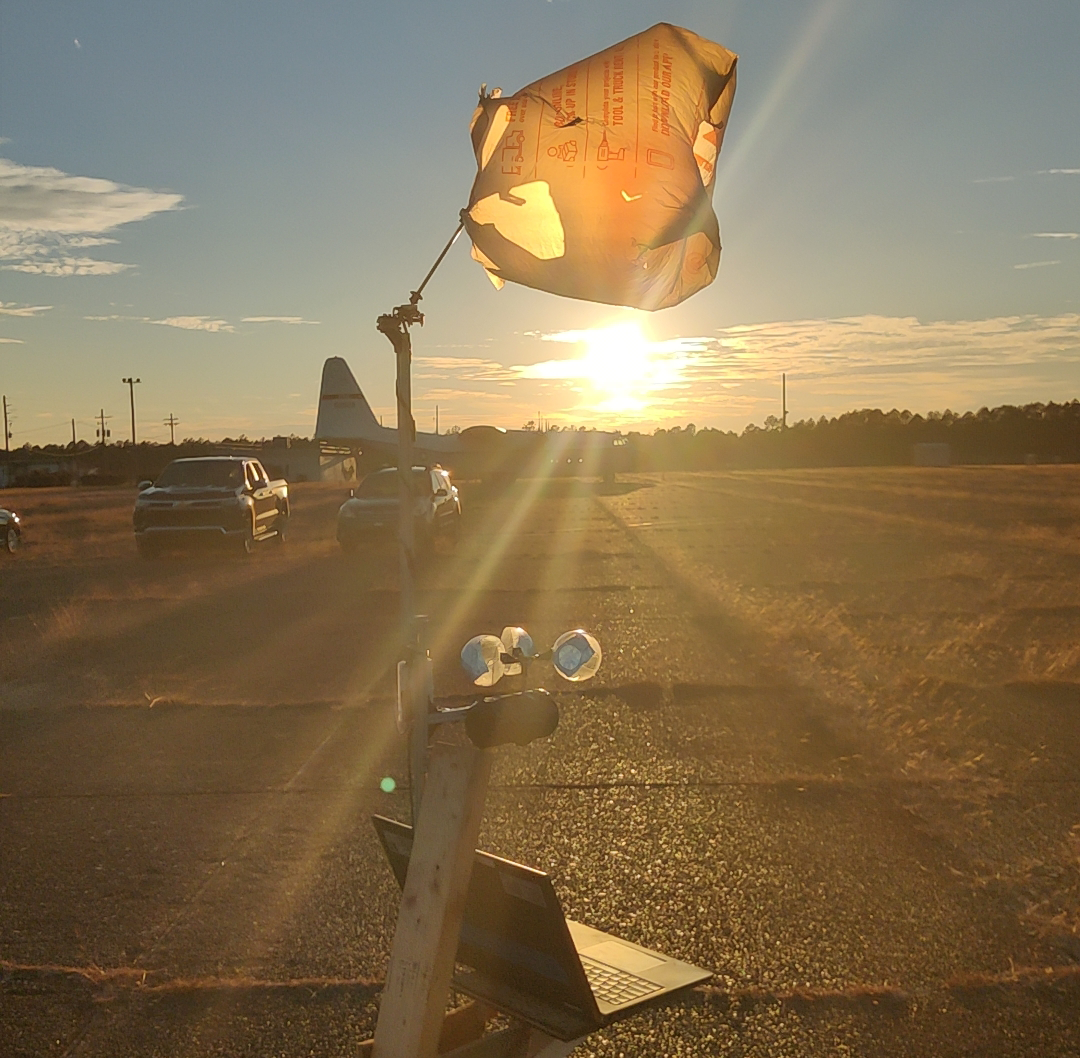Field training exercise demonstrates value of deployable engineers
EGLIN AIR FORCE BASE, FL (AFRL) – Over the course of 10 days in November 2023, a group of scientists and engineers, or S&Es, at Eglin Air Force Base demonstrated the value of adding a specialized team of deployable S&Es to high-action air bases.
“A Scientist and Engineer Demand Force Team, or SEDFT, is a forward deployable team of scientists and engineers trained and equipped to solve problems,” said Lt. Garrett Demeyer, project lead, Munitions Directorate. “With a wide range of technical skills and a rapid prototyping kit, we’re ready to innovate at our expeditionary air bases and turn inside an adversaries’ technology OODA loop.”

An Air Force Research Laboratory, or AFRL, Scientist and Engineer Demand Force Team, or SEDFT, based in AFRL’s Munitions Directorate, constructs a makeshift portable weather station as a solution to simulated damaged or destroyed weather monitoring and reporting technologies at Eglin Air Force Base, Fla., Nov. 9, 2023. A SEDFT is a forward deployable team of scientists and engineers trained and equipped to solve problems, said Lt. Garrett Demeyer, project lead, AFRL Munitions Directorate. (U.S. Air Force photo)
The team included members from Air Force Research Laboratory’s Sensors, Information, Directed Energy and Munitions directorates with a wide variety of S&E backgrounds.
In this first expeditionary style exercise, SEDFT designed a series of practice problems to simulate realistic challenges encountered in the field. The group divided into Team Alpha and Team Bravo and worked diligently to solve problems on the fly using specialized knowledge. The team was able to produce solutions, taking them from concept to capability in a matter of hours.
One simulated challenge was a base attack, resulting in heavy casualties and significantly decreased manpower, particularly within the munitions squadron. In response, the team was able to convert an SUV into a self-driving vehicle that could be programmed and used to transfer munitions and other supplies across a base. The conversion did not require any permanent changes to the vehicle. The team developed the idea and transitioned it into a capability in less than 24 hours.
SEDFT addressed serious but often-overlooked problems, such as damaged forecasting and reporting tools for weather Airmen. Using simple materials found in their environment, such as a plastic bag and water jug, the team was able to build a fully functional remote weather station that collected accurate data on wind speed and direction, barometric pressure, humidity and temperature and transmitted it wirelessly to a report hub. This simulation was modeled after a real-world problem found in the Guardian and Airmen Innovation Network.
In another scenario, the team created a dual solution for the destruction of a base’s early-warning radar. In this type of event, minutes are crucial to detect and warn an entire base of incoming cruise or ballistic missiles. Team Alpha quickly developed a phone app that could detect noise above a certain threshold, send a warning to a central station and trigger an air raid siren. Additionally, Team Bravo created a high-quality optical camera capable of collecting a near-constant stream of data from the horizon. Any discrepancies in its field of view would automatically trigger a chime to alert Airmen of incoming threats.
Among several other innovative solutions taken from concept to capability during the exercise, the team worked with the local 96th Security Forces Squadron, or SFS, to develop solutions to their own work challenges, such as a hands-free ID scanner that would enable SFS to respond quickly to a threat at a base gate. Simple solutions like this could drastically change the outcome of dangerous situations at base gates and security checkpoints.
The reaction from SFS was positive.
“This is what I’ve been looking [forward to] for five years,” said Maj. Andrew McFee, 96th SFS commander.
Today’s warfighting technologies are rapidly evolving, Demeyer said.
“To win, it is crucial to quickly out-innovate the enemy in an ever-changing technological environment,” Demeyer added. “By employing the highly skilled and technical minds of the Air Force Research Lab in the field, the Air Force will create solutions to challenges almost as quickly as they present themselves. The Deployable Engineer, or SEDFT, provides the Air Force with the technical flexibility that is key to dominating a modern battlefield.”
The team plans to continue training with exercise “COPE NORTH” in February 2024.
About AFRL
The Air Force Research Laboratory, or AFRL, is the primary scientific research and development center for the Department of the Air Force. AFRL plays an integral role in leading the discovery, development and integration of affordable warfighting technologies for our air, space and cyberspace force. With a workforce of more than 12,500 across nine technology areas and 40 other operations across the globe, AFRL provides a diverse portfolio of science and technology ranging from fundamental to advanced research and technology development. For more information, visit www.afresearchlab.com.
